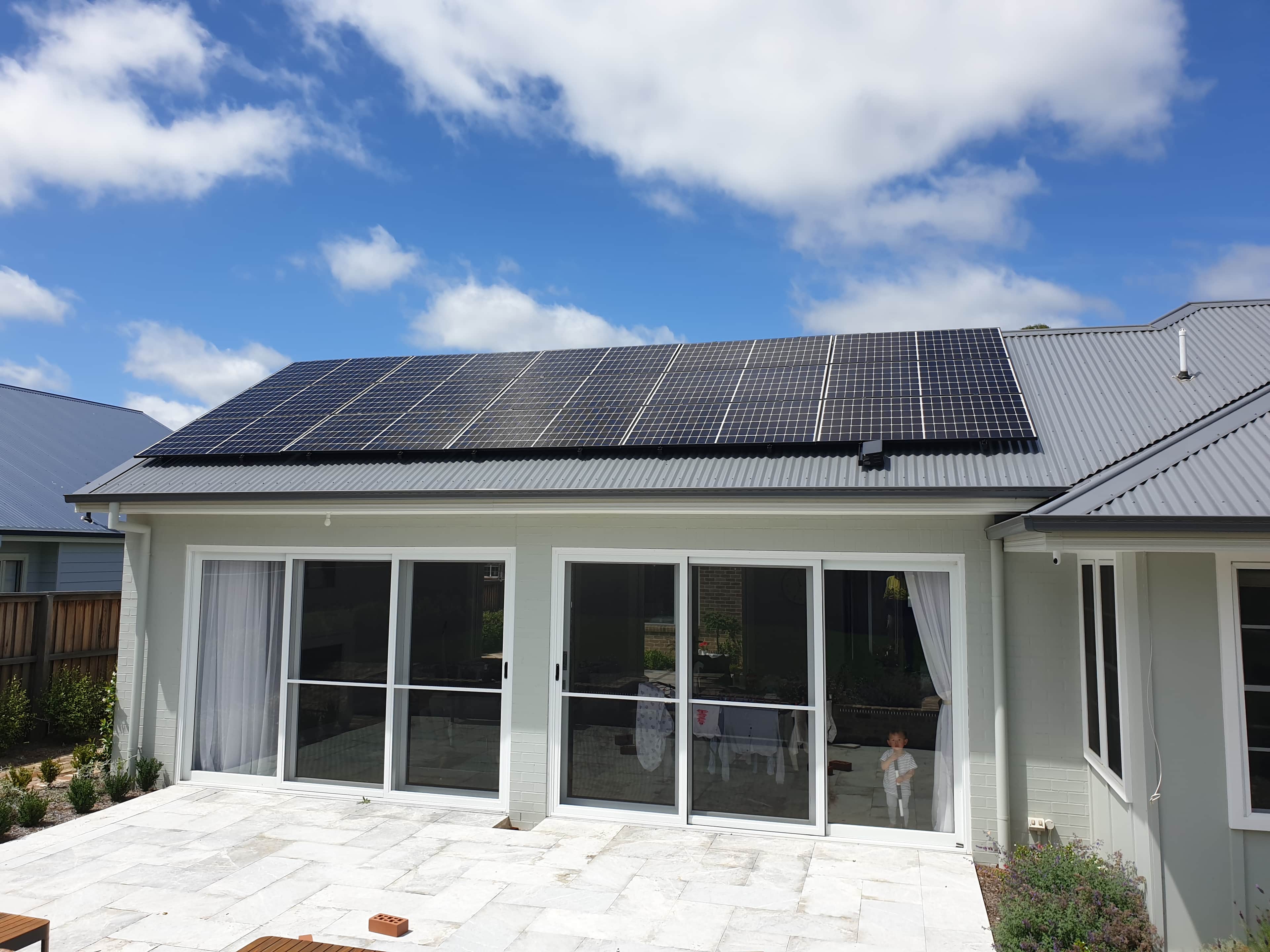
Solar 101: Everything You Need to Know Before Investing in Solar for Your Home
When it comes to investing in solar for your home, one size definitely doesn’t fit all. You might be looking to cut your power bills, make your home more sustainable, or even protect yourself from unpredictable energy prices. The key is understanding your why. Why do you want to invest in solar?
Defining your goal from the start will help you figure out if solar is truly worth it for you. Once you know what you want to achieve, you’ll be in a much better position to make the right decision for your home.
Key Takeaways:
How Solar Energy Works
Solar panels capture sunlight and convert it into electricity using photovoltaic cells. An inverter transforms this electricity into a usable form for your home.Saving Money from Solar
As energy prices continue to rise, installing solar panels can significantly lower your electricity bills. You can save hundreds of dollars per quarter by using your solar power efficiently and feed-in tariffs.
Sizing Up Your Solar System
The right solar system size depends on your household’s energy needs and roof space. Choosing high-efficiency panels can reduce the number of panels needed while achieving maximum power generation.Solar Production in Winter
Solar panels generate electricity from light, not heat, so they still work efficiently in winter. Keeping panels clean and reducing unnecessary energy use can help maximise winter solar savings.How to Finance Solar
Financing options like home loans or green loans can help make solar more affordable. Choosing the right financing method can allow you to install solar now and pay it off with future energy savings.
How Does Solar Energy Work?
When sunlight reaches the Earth, solar panels capture its energy using photovoltaic cells. These cells are made of semiconductor materials that generate electricity when exposed to sunlight.
This energy is direct current (DC) electricity. However, most of our appliances and devices run on alternating current (AC).
To make electricity usable in our homes, we need an inverter. The inverter converts the DC electricity produced by solar panels into AC electricity, which is what our appliances, lights, and gadgets rely on. So, the inverter ensures compatibility with our existing electrical systems.
Once the AC electricity is ready, it flows into your home’s electrical system. Your appliances, from the refrigerator to the dishwasher, draw power from this solar-generated electricity. If you produce more electricity than you use, the excess energy can be stored in batteries or sent back to the grid, and your electricity retailer pays you a feed-in tariff.
Saving Money from Solar
Installing solar panels helps you reduce your power bills.
For example, a 10kW system, on average, will produce around 40kW per day. Say a particular household uses 20kW of power per day. This translates to saving 30c per kW or $6 per day. Although this may not seem like a lot, even using half of the available solar energy throughout the day generates $550 of savings quarterly. Combining this with a feed-in tariff of 10c per kW, this translates to another $181 quarterly. These savings combined to reduce a quarterly electricity bill of $800 down to $68.
As electricity prices soar and become increasingly unpredictable across Australia, households are turning to solar energy to reduce their energy bills. The fact that solar panels are becoming more affordable makes them a worthwhile long-term investment.

Sizing Up Your Solar System
There is no magic formula that fits every household, it's dependent on several factors such as how much power you would usually consume on an average day. Most good panels are rated 400W per panel. A higher-rated array of panels means you need fewer panels overall. For example, you can install 24 415W panels instead of 29 350W panels.

The number of panels you install depends on the amount of roof space you have available and the brand or type of panel you're thinking of installing. If you have a smaller roof or one with obstructions, you may want to install fewer high-rated panels.
Considering your household's base load will also help determine the right system for you. Every house has an average base load, which usually includes your fridge and freezer, lights, and any appliances left on standby.
When trying to decide on a system size, you may also want to factor in any additional usage that your solar system can account for. Some of the most draining appliances include pool pumps, spas, air conditioning, heating, dryers, dishwashers, and washing machines. You can determine system placement and size based on the times when you tend to use these appliances the most. Choosing the right system to suit your needs can save you $100 per kW per quarterly power bill.
Solar Panel Direction
Deciding on where your panels are installed is key to maximising your system's efficiency and performance.
As a general rule for installing solar panels in Australia, your system will generate the most electricity when facing north. This is especially important for winter months to ensure your solar panels get the maximum amount of daylight hours possible.
If you have a flat roof, installers will often tilt the panels north to match the direction of the sun. Angling them in this way changes their ideal season from summer to winter, which is beneficial as the hours of sunlight are decreased in winter.
Despite the north being widely recognised as the ideal direction, panels can be installed in any direction that better suits your house and energy needs.
For example, if you have a family that uses the most energy in the afternoon after school, you may find that western-facing panels are ideal for you. Even more beneficial is installing Enphase microinverters, allowing you to have a split panel array covering multiple roof sides, making the most of multiple periods of sunlight throughout the day and better meeting your peak energy needs.
Solar Production in Winter
Many people associate solar energy with heat, but in fact, solar is not reliant on heat at all, instead using light rays to generate electricity. Winter may decrease production slightly due to shorter days, potential cloud cover, and weaker rays, but this is not as significant as you’d expect.
Most solar systems can still comfortably cover the base load of your home, meaning you'll still get to experience solar savings year-round.
Maximising the output of your solar system throughout winter can be done quite simply. Firstly, keep your panels clean and free of obstruction. This means keeping your panels out of shade by pruning the surrounding trees. Perhaps consider cleaning your panels occasionally and checking on them to make sure there's no debris obstructing sunlight.
During these colder months, working to reduce your energy consumption can also be greatly beneficial. Heating is a massive use of energy throughout these months, and reducing your need for heating can help bolster the benefits of your solar system.
You can achieve this by installing insulation, installing floor-to-ceiling curtains, and using door snakes to prevent cold air from entering.

Solar Panel Price
If you're in the solar market, you may be wondering why you’ve been quoted at so many different prices. It's important to understand that the price you pay depends on the brand of the products you choose and the quality of the installation.
With a great deal of cheap solar panels out there, it is important to understand that the cheapest option is not always the best option. But why pay more?
The quality of the product is so important to ensure that frequent maintenance and repairs are avoided, as well as decreased efficiency and possible threats to the safety of your home.
The first step is to research the manufacturer. Cheap manufacturers have been known to disappear, leaving you with little to no aftermarket support or servicing.
Workmanship quality is equally as important, if not more so, as even a good quality system installed poorly will have a decreased lifespan and develop the potential to experience a range of problems over time.
At the end of the day, how much should a system cost? There's no magic formula for determining the cost, as it is greatly dependent on many factors such as energy consumption, size, brand, and difficulty of installation, but a general rule is $750 - $1700 per kW of installed solar; anything lower than this is concerningly cheap.
Cheap Solar: Why You Should Be Cautious
Solar is a significant investment, and although it is tempting to try and look for the cheapest deal, this, unfortunately, is not a purchase you can make based on that alone. Cheap solar panels present some serious risks in terms of safety and often will not perform up to your expectations.
To make sure you're getting a quality system for the right price there are a few things to look out for. Many cheap or dodgy installers like to hide behind brand-name products such as REC, giving you the impression of reliability. These retailers often discount the price by as much as $1000 below the industry average.

Installations are usually carried out by inexperienced sub-contractors, as a result, the workmanship is often poor and the process lacks post-installation support, some have even been known to block customers when they make contact regarding an issue they are experiencing.
There is growing pressure for the Clean Energy Council to address this issue and implement measures to clean up the industry. Although this is not happening at the moment, it is up to you to ensure your solar retailer is reputable. The best way of protecting yourself is to thoroughly research your installer. This includes reviews, offers, how long they’ve been in business, and where they are based, to name a few.
This is a significant issue in the industry, with 1 in 4 solar systems being deemed faulty. In addition, over 1,000 solar installers have left the industry in recent years, leaving those who bought from them without any ongoing support or maintenance.
How to Finance Solar
Installing a solar system usually involves significant upfront costs, depending on its size and the products being installed. Many choose to finance their systems, and several different options are available.
Some choose to borrow against their home loan, redrawing money from their mortgage as this typically has the lowest interest rate, but there are other options to consider as well.
One good example is a green loan, which is a specialised type of financing designed to promote environmentally friendly practices. These loans are used to purchase or install approved clean energy products such as solar systems and home battery storage. The definition of eligible products may vary between lenders, but they typically include items that enhance energy efficiency, reduce carbon emissions, and contribute to a greener planet.
At 1KOMMA5°, we often refer our customers to Community First or Brighte.
Conclusion
Although finding the right system may seem daunting, don't let that scare you into missing out on the benefits of solar energy.
It comes down to figuring out what's right for you and conducting adequate research before you buy.
Our team at 1KOMMA5° would be happy to help you answer your questions and understand what's right for you. If you're not ready for that step yet, you might want to try reading some of our other resources to help with your solar journey:
Blog Post: Your Ultimate Guide to Solar Batteries For Your Home 2026

1KOMMA5° Blog
Need more information?
Head over to the 1KOMMA5° blog for more helpful tips and other important guides on everything solar, from inverters, panels and batteries to how to make the most of your investment for years to come.